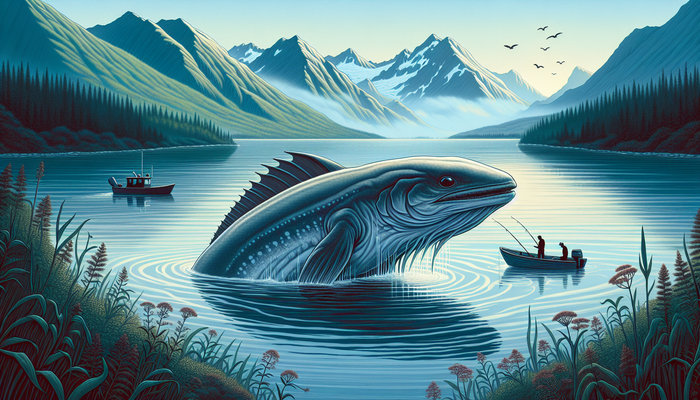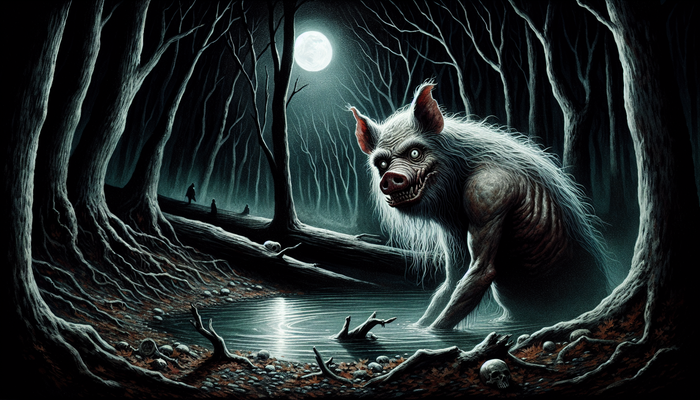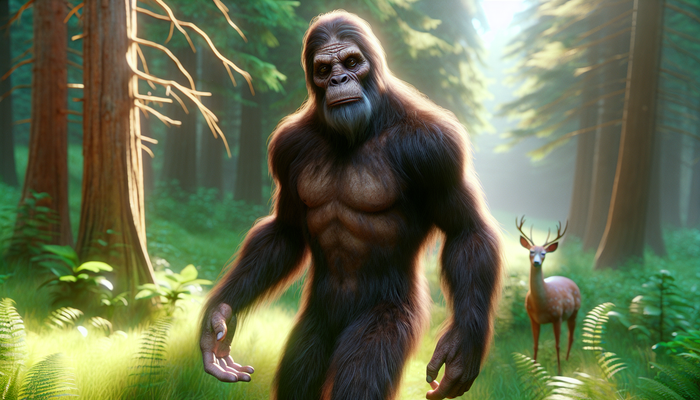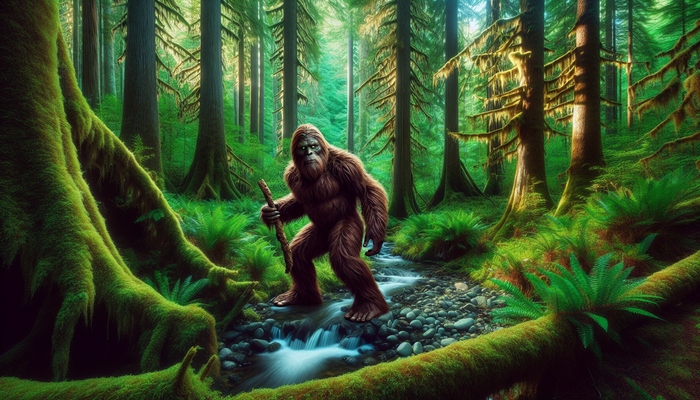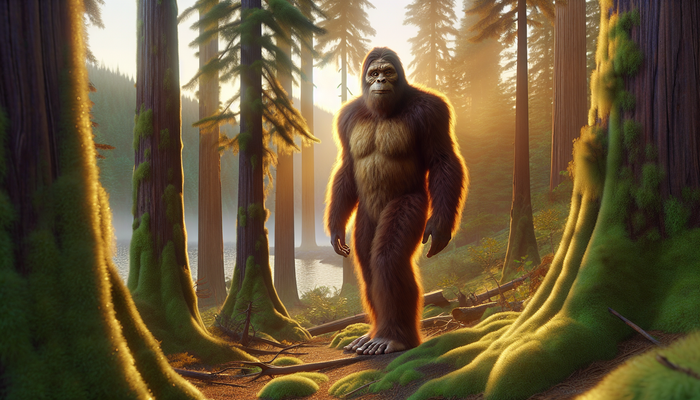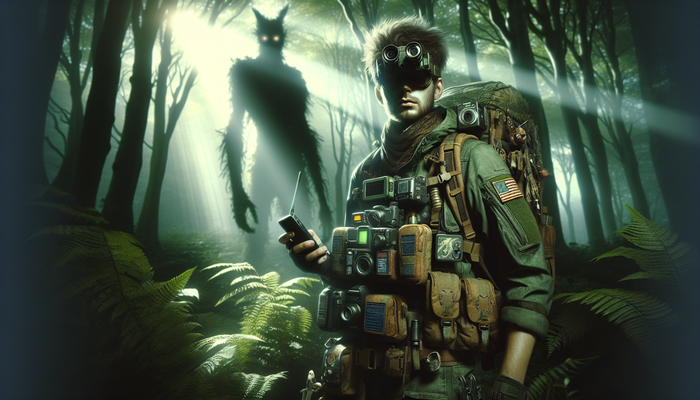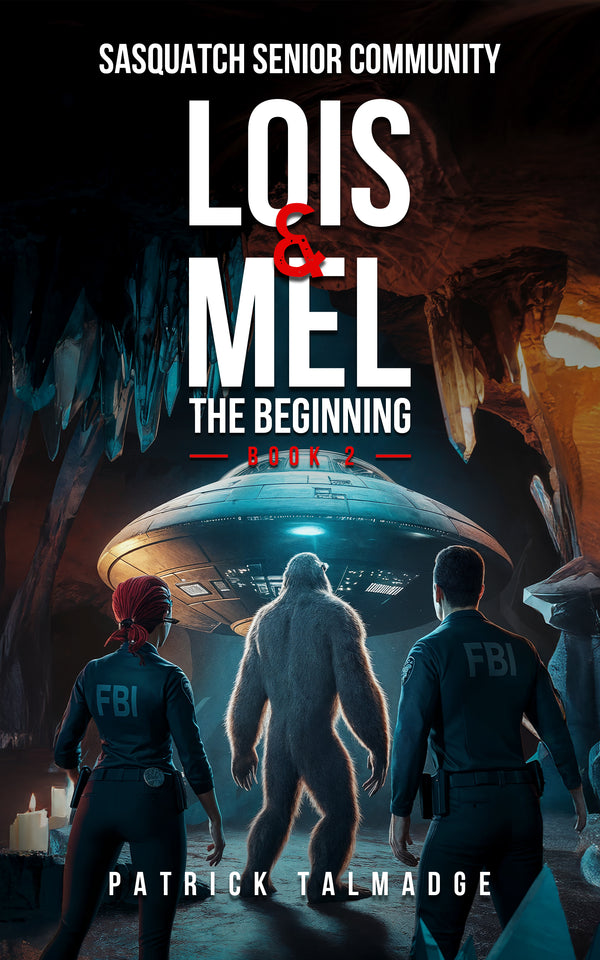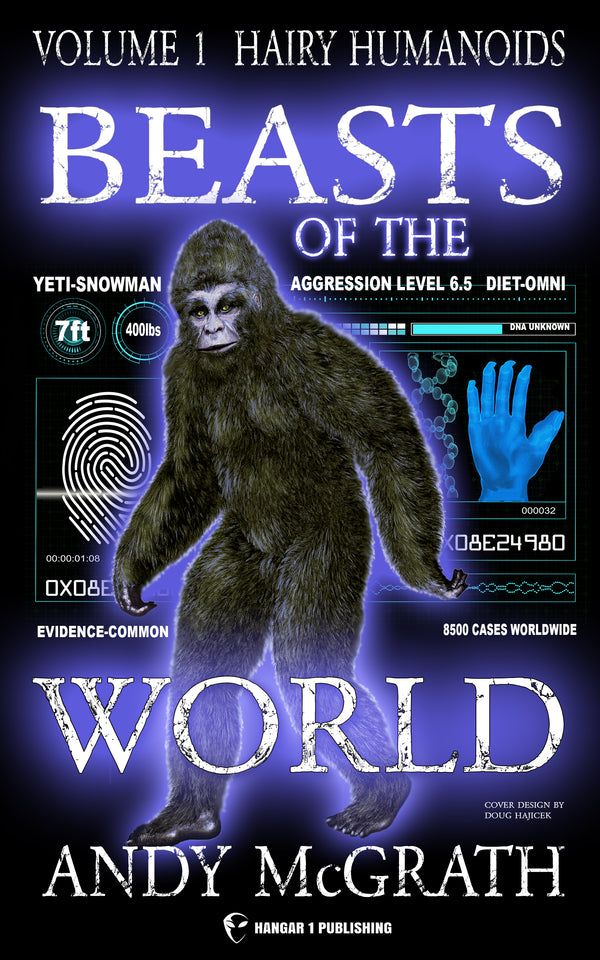The Legend of Sink Hole Sam: Kansas' Mysterious Lake Monster

By Jack Sullivan, Cryptozoologist
In the heart of Kansas, where the prairies stretch as far as the eye can see, there lurks a tale that has captured the imagination of locals and visitors alike for generations. It's a story that blends the murky waters of a sinkhole with the even murkier realms of folklore and cryptozoology. This is the legend of Sink Hole Sam, Kansas' very own lake monster.
Now, you might be thinking, "A lake monster? In Kansas?" I know, it sounds about as likely as finding a surfer in Topeka. But stick with me, because this tale is as rich and complex as the ecosystem of the wetlands that once dominated this landscape.
Setting the Stage: Kansas in the Early 1900s
Let's set the stage. Picture Kansas in the early 1900s. It wasn't all wheat fields and sunflowers back then. A network of freshwater lakes and streams crisscrossed the state, creating a paradise for wildlife and a playground for anglers and hunters. But as with many things in life, change was coming, and it was coming fast.
By the 1920s, the landscape began to transform. Farmers and developers, eager to make use of every inch of land, started draining these lakes and wetlands. It was like watching a giant bathtub slowly empty, leaving behind only a few puddles here and there. One of these "puddles" was Lake Inman, which, believe it or not, is now the largest natural lake in Kansas. Talk about a big fish in a small pond!
But our story doesn't focus on Lake Inman itself. No, we're more interested in what locals call "The Big Sinkhole," a deep depression near the lake that's about as inviting as a dentist's waiting room. It's in this murky, mysterious sinkhole that our tale begins to take shape.
The First Sighting: 1952
The year was 1952. Eisenhower was about to become president, "I Love Lucy" was the hottest show on TV, and in Inman, Kansas, two fishermen were about to have an encounter that would put their little town on the map.
Picture this: Two guys, probably hoping for nothing more exciting than a good catch and a cold beer, are out fishing at the Big Sinkhole. Suddenly, the water starts to churn. Something breaks the surface. But it's not a fish. It's not a log. It's... well, they're not quite sure what it is.
According to their breathless accounts, what they saw was a creature about 15 feet long – that's the length of a decent-sized boat, folks – and as thick around as a car tire. It had a flat head and a long, undulating body that moved through the water with an eerie grace.
The Second Sighting: 1953
Now, if you're anything like me, your first thought might be, "Were these guys hitting the moonshine a little early in the day?" But here's the kicker: They weren't the only ones who saw something strange in those waters.
The following year, in 1953, two local men named Albert Neufeld and George Regehr had their own close encounter with what they believed to be the same creature. Neufeld, apparently not one to simply gawk at a potential monster, decided to take matters into his own hands. He grabbed his rifle and took a couple of shots at the beast.
Now, I'm not sure what the hunting regulations are for unidentified lake monsters, but I'm pretty sure that's not in the guidebook. Luckily for Sam (and possibly for Neufeld, depending on how you look at it), the shots missed. The creature dove back into the depths, leaving behind nothing but ripples and a whole lot of questions.
The Birth of a Legend
Word of these sightings spread faster than gossip at a church picnic. Before long, the creature had a name: Sink Hole Sam. Why Sam? Well, your guess is as good as mine. Maybe they thought it sounded friendlier than "Terrifying Water Beast of Unknown Origin." Whatever the reason, the name stuck, and Sink Hole Sam became the talk of the town.
Enter Ernest Alva Dewey: The Satirical Twist
But this is where our story takes a turn from the realm of local legend into something... well, a bit more colorful.
Enter Ernest Alva Dewey, a newspaper columnist with a flair for the dramatic and a tongue planted firmly in cheek. Dewey, who had previously attributed UFO sightings to a mythical Kansas dragon called the "ball-tailed snickelhoopus" (I swear I'm not making this up), decided to investigate the Sink Hole Sam phenomenon.
In a move that would make modern-day satirists proud, Dewey "brought along" a scientific expert – the entirely fictional Dr. Erasmus P. Quattlebaum. Together, they determined that Sam was actually a "foopengerkle," a creature so extinct it didn't even know it was supposed to be dead.
According to Dewey's hilarious report, the foopengerkle was a subterranean dweller that occasionally popped up for air and a bit of sightseeing. He assured the good people of Inman that Sam was harmless, probably vegetarian, and definitely not bright enough to cause any real trouble.
The Media Frenzy
Now, you might think that such an obviously tongue-in-cheek report would put an end to the Sink Hole Sam hysteria. But if there's one thing I've learned about human nature, it's that we love a good mystery, even when it's served with a side of absurdity.
Instead of debunking the legend, Dewey's satirical take only fueled the fire. People latched onto the term "foopengerkle" with a fervor usually reserved for catchy pop songs. It became part of the local lexicon, a word that simultaneously poked fun at the legend and cemented its place in Kansas folklore.
As news of Sink Hole Sam spread beyond the borders of Kansas, the media frenzy kicked into high gear. Newspapers from coast to coast picked up the story, each adding their own spin to the tale. Suddenly, Sam wasn't just a local curiosity – he was America's newest celebrity.
The Tourist Invasion
Reporters flocked to Inman, hoping to catch a glimpse of the elusive creature. They interviewed locals, staked out the sinkhole, and wrote breathless accounts of every ripple and splash. Sam was compared to the Loch Ness Monster, turning this small Kansas town into an unlikely tourist destination.
And boy, did the tourists come. Cars lined up around the Big Sinkhole, filled with hopeful monster-spotters. Local residents still remember seeing hundreds of vehicles parked along the roads, their occupants armed with binoculars and cameras, ready to capture proof of Sam's existence.
The influx of visitors was a mixed blessing for Inman. On one hand, it put the town on the map and brought in some much-needed tourist dollars. On the other hand, well, have you ever tried to go about your daily business with a bunch of monster hunters camped out in your backyard?
The Decline of Sightings
But here's where the story takes another twist. Despite all the attention, despite all the eyes trained on the water, sightings of Sink Hole Sam began to dwindle. By the late 1950s, reports had become few and far between. It was as if Sam, camera-shy creature that he was, had decided to retreat from the limelight.
This decline in sightings led to all sorts of speculation. Some folks theorized that Sam had simply gone back to his underground lair, tired of all the fuss. Others, more grimly, suggested that the changing environment – the draining of the wetlands and the alteration of the landscape – might have spelled doom for our aquatic friend.
The Kingman State Lake Connection
But just when it seemed like Sink Hole Sam might fade into obscurity, the legend found new life in an unexpected place. About 50 miles south of Inman, near Kingman State Lake, reports began to surface of a similar creature. This new beast was described as a massive snake, so large that some claimed even a tractor couldn't safely pass over it.
Now, Kingman State Lake isn't a natural formation like the Big Sinkhole. It's a man-made lake, created from a marsh next to the Ninnescah River. But that didn't stop people from drawing connections between this new creature and good old Sam.
In the late 1960s, the sightings at Kingman State Lake reached such a fever pitch that a full-blown monster hunt was organized. Picture it: dozens of determined Kansans, trudging through marshland, hoping to catch a glimpse of a giant snake. It's like a Midwestern version of "Jaws," only with more wheat fields and less ocean.
Despite their best efforts, the monster hunters came up empty-handed. They found plenty of native snake species, but nothing that matched the description of the Kingman Lake monster. This creature, like Sam before it, seemed to have a knack for avoiding detection.
Theories and Speculations
The Kingman sightings reignited interest in Sink Hole Sam. People began to wonder: Could these be the same creature? Had Sam somehow found a way to travel between bodies of water? Or was Kansas home to not one, but two mysterious aquatic beasts?
These questions led to a flurry of theories about the true nature of Sink Hole Sam and his possible Kingman cousin. Some of these theories were grounded in scientific possibility, while others... well, let's just say they required a healthy dose of imagination.
Plausible Explanations:
- A remnant of a prehistoric species surviving in underground caverns
- A case of mistaken identity involving large non-native snakes
- A type of giant amphibian, similar to a caecilian
Creative Explanations:
- A government experiment gone wrong
- A visitor from another dimension
- A very lost and very confused submarine
The Enduring Legacy of Sink Hole Sam
But regardless of the theory, one thing remained constant: people's fascination with the idea of Sink Hole Sam. The legend tapped into something primal in the human psyche – our love of mystery, our fascination with the unknown, and our hope that there might still be wonders in this world yet to be discovered.
This enduring fascination has kept Sink Hole Sam alive in Kansas culture long after the sightings stopped. The creature has become a part of local folklore, a story passed down from grandparents to grandchildren, a tale told around campfires and at sleepovers.
Sam has inspired all sorts of creative endeavors. There are podcasts dedicated to discussing the legend, articles (like this one) exploring its history, and even trading cards featuring artist renditions of what Sam might look like. Local businesses in Inman have embraced the legend, using Sam's image to attract tourists and sell merchandise.
The Impact on Inman
But the impact of Sink Hole Sam goes beyond mere tourism dollars or pop culture references. The legend has become a part of Inman's identity, a quirky piece of history that sets this small Kansas town apart. It's a reminder of a time when the landscape was different, when lakes and wetlands dominated the area, and when the possibility of an unknown creature lurking in the depths didn't seem so far-fetched.
The story of Sink Hole Sam also serves as a testament to the power of storytelling. It shows how a simple sighting, whether real or imagined, can take on a life of its own, growing and evolving as it's passed from person to person. It's a reminder that in an age of instant information and scientific explanations, there's still room for mystery and wonder in our world.
Conclusion: The Meaning of Sink Hole Sam
As we look back on the legend of Sink Hole Sam, it's easy to dismiss it as just another tall tale, a product of overactive imaginations or a ploy to attract tourists. But to do so would be to miss the point. The value of the Sink Hole Sam legend isn't in its veracity, but in what it represents.
Sam represents the human desire to believe in something extraordinary, to imagine that there might be more to our world than what we can see and touch. He represents the power of community, of shared stories that bring people together and give them a common point of reference. And in a way, Sam represents the spirit of Kansas itself – surprising, resilient, and always with the potential to amaze.
So the next time you find yourself driving through central Kansas, maybe take a detour to Inman. Stop by the Big Sinkhole and gaze out over its murky waters. And who knows? If you're very quiet, and very patient, you might just catch a glimpse of something moving beneath the surface. After all, in a world full of wonders, who's to say that Sink Hole Sam isn't still out there, waiting for the right moment to make his grand reappearance?
Just remember – if you do see him, maybe leave the rifle at home. Sam's been through enough already.
From Bigfoot to UFOs: Hangar 1 Publishing Has You Covered!
Explore Untold Stories: Venture into the world of UFOs, cryptids, Bigfoot, and beyond. Every story is a journey into the extraordinary.
Immersive Book Technology: Experience real videos, sights, and sounds within our books. Its not just reading; its an adventure.


